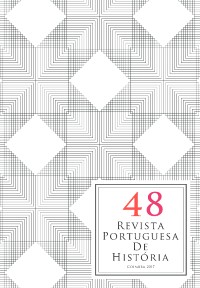Please use this identifier to cite or link to this item:
https://hdl.handle.net/10316.2/93613| DC Field | Value | Language |
|---|---|---|
| dc.contributor.author | Tovar Pulido, Raquel | - |
| dc.date.accessioned | 2017-11-18T00:06:55Z | |
| dc.date.accessioned | 2020-10-05T00:48:26Z | - |
| dc.date.available | 2017-11-18T00:06:55Z | |
| dc.date.available | 2020-10-05T00:48:26Z | - |
| dc.date.issued | 2017 | - |
| dc.identifier.issn | 2183-3796 (digital) | - |
| dc.identifier.issn | 0870-4147 | - |
| dc.identifier.uri | https://hdl.handle.net/10316.2/43237 | - |
| dc.description.abstract | La ciudad de Trujillo se convierte, durante el Antiguo Régimen, en un foco de movimientos de población, que absorbe inmigrantes procedentes de comunidades rurales, así como experimenta la salida de personas que se dirigen a otros territorios. Como fuente para este estudio, hemos utilizado los Padrones de habitantes que se conservan en el Archivo Municipal de Trujillo, en los años veinte del siglo xix. Analizamos en este trabajo, a partir de un análisis microhistórico, los movimientos de la población de Trujillo en dos vertientes: por un lado, analizamos las características biológicas y socio-profesionales de las personas que migran, así como sus circunstancias familiares. Por otro lado, analizamos las posibles causas de la movilidad y si los movimientos migratorios entre personas procedentes de comunidades rurales se producen a corta, media o larga distancia. | spa |
| dc.description.abstract | During the Ancien Regime, in the city of Trujillo there are population movements, because it absorbs immigrants from rural communities, as well as experiencing the departure of people who go to other territories. As a source for this study, it is used the Census of Population that are preserved in the Municipal Archive of Trujillo, in the twenties of the nineteenth century. The micro-historical analysis is done in two ways: on the one hand, it is analyzed the biological and socioprofessional characteristics of the people who migrate, as well as their family circumstances. On the other hand, it is analyzed the possible causes of mobility and whether migrants between people from rural communities occur in a short, medium or long distance. | eng |
| dc.language.iso | spa | - |
| dc.publisher | Imprensa da Universidade de Coimbra | - |
| dc.rights | open access | - |
| dc.subject | Movilidad poblacional | - |
| dc.subject | Familia | - |
| dc.subject | Extremadura | - |
| dc.subject | Partido de Trujillo | - |
| dc.subject | Antiguo Régimen | - |
| dc.subject | Population mobility | eng |
| dc.subject | Family | eng |
| dc.subject | Extremadura | eng |
| dc.subject | Partido of Trujillo | eng |
| dc.subject | Ancien Regime | eng |
| dc.title | Migraciones y movilidad en el interior de la Península Ibérica: Trujillo y su Partido en el primer cuarto del siglo XIX | por |
| dc.title.alternative | Migrations and mobility in the interior of the Iberian Peninsula: Trujillo and its Partido in the first fourth century of the nineteenth century | por |
| dc.type | article | - |
| uc.publication.collection | Revista Portuguesa de História nº 48 | - |
| uc.publication.firstPage | 17 | - |
| uc.publication.issue | 48 | - |
| uc.publication.lastPage | 37 | - |
| uc.publication.location | Coimbra | - |
| uc.publication.journalTitle | Revista Portuguesa de História | - |
| dc.identifier.doi | 10.14195/0870-4147_48_1 | - |
| uc.publication.section | Dossier temático "Mobilidade e migrações" | - |
| uc.publication.orderno | 3 | - |
| uc.publication.area | Artes e Humanidades | - |
| uc.publication.manifest | https://dl.uc.pt/json/iiif/10316.2/93613/269491/manifest?manifest=/json/iiif/10316.2/93613/269491/manifest | - |
| uc.publication.thumbnail | https://dl.uc.pt/retrieve/12152588 | - |
| item.grantfulltext | open | - |
| item.fulltext | With Fulltext | - |
| Appears in Collections: | Revista Portuguesa de História | |
Files in This Item:
| File | Description | Size | Format | |
|---|---|---|---|---|
| migraciones_y_movilidad_en_el_interior.pdf | 1.06 MB | Adobe PDF |  |
Items in DSpace are protected by copyright, with all rights reserved, unless otherwise indicated.
